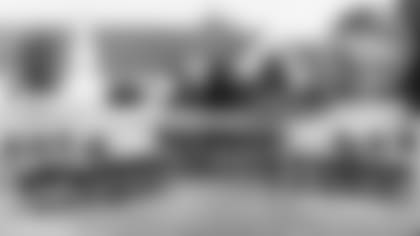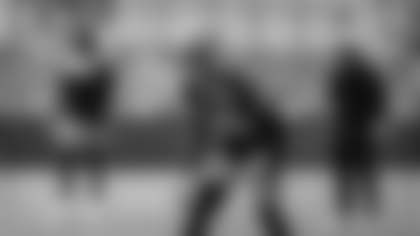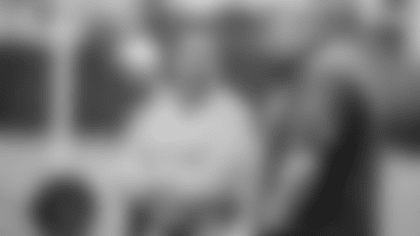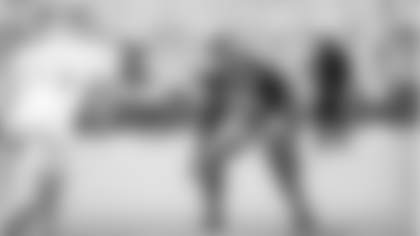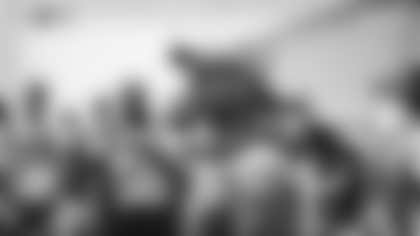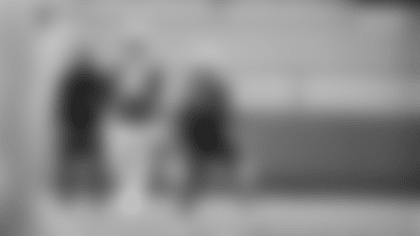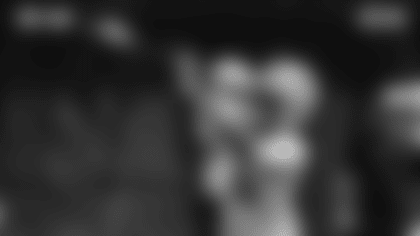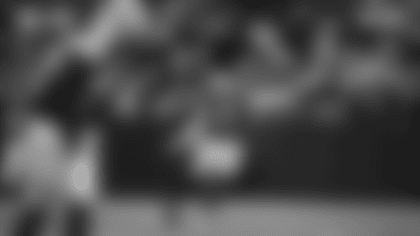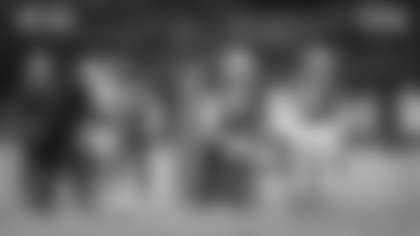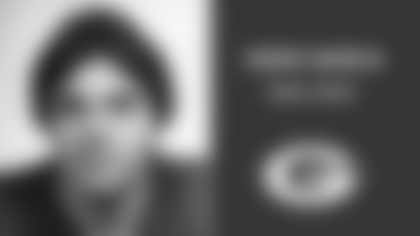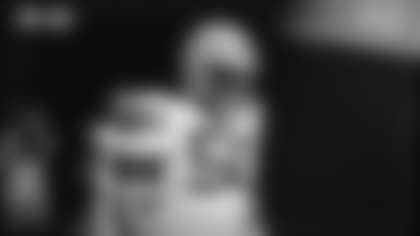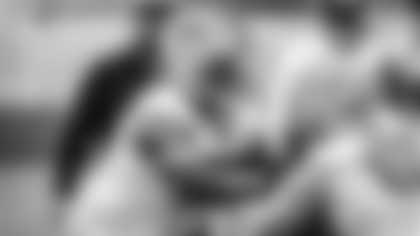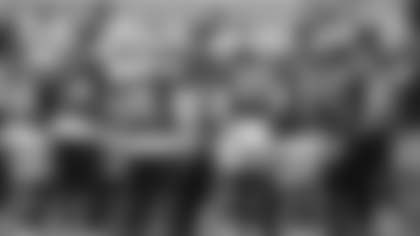Jeff from Peynier, France
Do you have any theories about how Rockwood Lodge burned down? And was the lodge one of the reasons Curly Lambeau relinquished his duties with the team?
Rockwood Lodge, located roughly 18 miles northeast of Green Bay along the bayshore, was the Packers' training site from 1946-49. It was destroyed by fire Jan. 24, 1950.
Melvin Flagstad, the lodge's caretaker, blamed the fire on faulty wiring and said he had always feared there'd be a fire there. Weather contributed to it becoming an inferno. Jan. 24 was an unseasonable, 40-degree day with thunder and lightning, fog and a 25-mile per hour wind.
Once the fire started, there also was little chance of it being put out because of Rockwood's isolated location. The first firefighters on the scene were a four-man crew from the Duquaine Lumber Co., in nearby New Franken, and they arrived some 15 to 30 minutes after flames were first spotted. They came with a pumping unit on a trailer attached to a jeep. A fire truck from the Town of Preble, now part of Green Bay, also responded, but burned out a bearing four miles from the scene and never made it.
With smoke billowing 100 feet high and flames soaring to 50 feet, the only piece of equipment ever used was a fire extinguisher. The crew from the lumber company had 600 feet of hose on its trailer, but never used it.
As for your second question, the decision to purchase Rockwood Lodge certainly backfired and contributed to Lambeau's demise in Green Bay. But it wasn't just the controversy surrounding Rockwood that prompted him to resign and accept an offer eight days after the fire to become coach of the Chicago Cardinals.
He had just endured the two worst seasons in Packers history. He was spending more time during the offseason in California rather than tending to business back home and being sharply criticized for it inside and outside the organization. He had turned old allies into bitter enemies, notably two members of the Hungry Five, Dr. W.W. Kelly and Gerald Clifford, as well as Packers co-founder George Whitney Calhoun. And they were out to get him. Kelly was upset over being replaced as team physician and Calhoun over being replaced as publicity director. Clifford, as the team's attorney and a good friend of both, had drafted a number of measures in 1947, which were passed by the executive committee and effectively usurped Lambeau's authority. So those were other contributing factors to Lambeau's departure.
Along with Ellyn Katch Kehoe, a daughter of the Flagstads, I wrote a story about Rockwood that appeared in Voyageur, northeast Wisconsin's historical magazine, in the Summer/Fall 2008 issue.
Nate from Seattle, WA
Curious what you thought of the ESPN story about someone with the Packers torching Rockwood Lodge? Did arson save the Packers?
The fire was discovered at about 2 p.m. Flagstad and his wife, Helen, were in the lodge, along with their two children, ages 12 and 9, and two young neighbor kids.
First, ponder this: How many arsonists would carry out their task at 2 o'clock in the afternoon, in a mid-winter thunderstorm along a main highway in a rural area and in a building surrounded on three sides by wide-open spaces? Behind it was a rocky ledge and more than 1,600 square miles of water.
Then the next question is: Who would have been a suspect?
Lambeau was en route home from Philadelphia where he and George Strickler attended the final, late evening session of a league meeting the night before. Strickler, former member of the Chicago Tribune sports staff and also former director of public relations for the NFL, had been hired in March 1947 as assistant general manager and director of public relations for the Packers, but was instructed by the executive committee in December 1948 to refrain from using the assistant GM title. While his contract was about to be terminated, Strickler didn't have time to get back to Green Bay, either.
So who else was a possibility? The 24 businessmen on the Packers board of directors? Would one of them have lit a match to a building occupied by four young kids and a couple dear to many in the Packers organization, especially Lambeau, for all they had done for the players and their families?
The arsonist claim was first planted, I believe, by Larry Names in his conspiracy theory-filled books about Packers history and ESPN bought into it like an unwitting victim of an Internet scam.
Here's my theory on their theory.
In their wild imaginations, they pictured a band of Packers board members dressed in suits and ties and wingtips, crawling hundreds of yards on their hands and knees through sodden farm fields and starting the fire with a heavy-duty blow torch.
Unless they suspected they came by boat.
Jeff from St. Paul, MN
My understanding is Lambeau purchased Rockwood Lodge unilaterally and it was not a popular decision with the board of directors. Why do you think he purchased it and were there any suspicions about the insurance money?
Lambeau was the driving force behind the purchase, partly because he was a visionary and partly because his players were having a hard time finding housing in Green Bay. But the Packers' board of directors unanimously voted to authorize $32,500 for the purchase in May 1946.
Unfortunately, Lambeau was about 20 years ahead of his time. The cost of housing and feeding the players at Rockwood was prohibitive at a time when the Packers had little money. Fans grumbled about the players no longer being part of the community. And board members didn't like that Lambeau had his third wife, Grace, oversee the decorating, apparently with an unlimited budget. Perhaps most problematic was the practice field in front of the lodge. Under its thin soil was an unforgiving bed of rock that caused shin splints and other leg injuries.
The lodge was a splendid looking building. Many of the players liked living there and there were even five cottages behind the lodge where married players could stay with their families. But it was a white elephant. No question.
The Packers barely survived the 1949 season and the insurance payoff helped them stay in business. John Torinus, an executive committee member at the time, wrote in his book "The Packer Legend: An Inside Look" that the team collected $75,000 from its insurance coverage. So, yes, it was a fortuitous event in some ways. In fact, I remember in the 1970s, a standing joke in Green Bay was that board members were fighting over who should get credit for the fire. But I don't think anyone thought someone would be gullible enough to believe it.
James from Fitchburg, WI
Is there any information on why there was one armchair in the driveway of the burning Rockwood Lodge?
After Flagstad hustled his wife and kids out of the lodge, he rushed to the attic and tried to put out the flames himself. Trapped and his cause hopeless, he was forced to break a window and jump to safety from the second floor, according to the Green Bay Press-Gazette's coverage of the fire the next day.
Meanwhile, Helen Flagstad rushed to the highway, about 200 yards away, and started flagging down drivers. Joseph Roeser was one of the first to stop and he helped Melvin Flagstad pull a 100-pound gas tank away from the lodge to prevent an explosion. At that point, the two apparently re-entered the building and carried out the green davenport. The Press-Gazette said it was the only piece of furniture saved.
Here, again, I'm not a fire marshal, but logic tells me if Flagstad rushed upstairs with his extinguisher, that was where the fire originated. How did an arsonist get up there without being spotted? And why would he bypass the gas tank?
Bruce from New Canaan, CT
I play tennis with one of the sons of Randy Duncan, who died recently. I read that Duncan was the first-round draft pick of the Packers in 1959, but never played for them and opted for the CFL. Can you add any insight? Did he ever come close to signing with the Packers?
Not only was Duncan the Packers' first pick, he was the first pick in the draft. The first four rounds of the 1959 draft were held on Dec. 2, 1958, and the Packers owned the first choice based on their 1-8-1 record, worst in the league with two games to go. Head coach Scooter McLean and scout Jack Vainisi represented the Packers at the draft meeting and settled on Duncan as the choice.
Duncan finished second in the Heisman Trophy voting that season and would lead Iowa to a lopsided victory over California in the Rose Bowl a month later. But 15 days after the draft before the bowl game was even played, McLean resigned under fire and he wasn't replaced until Lombardi was hired on Jan. 28, 1959.
In early February, Lombardi sent Vainisi to Iowa City to meet with Duncan. At the same time, Iowa coach Forest Evashevski was advising Duncan to skip pro ball and go to law school. On Feb. 19, 1959, Lombardi learned en route to the funeral of Giants owner Tim Mara that Duncan had signed with the British Columbia Lions of the CFL. According to various reports, Duncan received $35,000 for two years and a signing bonus of $2,000. Nearly 35 years later, Duncan told Andy Fenelon of Packer Plus that the Packers offered $15,000 for one year with no bonus.
Lombard's reaction over losing the first pick in the draft? "Naturally, we feel badly on losing our first choice," he said. "He was given the best offer we possibly could have given – even a little more. Our offer was as good as any first draft choice could get. Evidently, Duncan did not have the confidence to play in our league."
Duncan played in 10 games over two years with British Columbia and finished his pro career as the backup quarterback of the AFL Dallas Texans (now Kansas City Chiefs) in 1961. He became an attorney in Des Moines, Iowa, and died Sept. 27, 2016, at age 79.
Guy from Madison, WI
Were there ever any games televised from old City Stadium? What was the first known televised Packers game statewide or nationally?
The first Packers game in Green Bay to be televised was the season opener against Detroit in 1956, the last year they played at old City Stadium. The Packers' two other home games that year against the Chicago Bears and San Francisco also were televised.
The first time the Packers appeared on national television was their Thanksgiving Day game in Detroit in 1951, despite Torinus' claim in his book that it was 1953.
In 1949, the NFL voted to allow teams to negotiate their own TV deals and WTMJ-TV announced it planned to telecast the Packers games played in Milwaukee. In 1950, Washington and the Los Angeles Rams were the first NFL teams to have all of their games televised, and the Packers faced both teams in Milwaukee that season, as well as the Rams in L.A. Presumably, all or many of those games were televised somewhere and perhaps some other games as well, but I can't verify that.
Marin from West Lawn, PA
After Vince Lombardi relinquished the coaching duties to Phil Bengtson, a soundproof booth was built for Lombardi's game-day use. Do you know why such a booth was constructed?
The press box at Lambeau Field was remodeled in the summer of 1968 and Chuck Lane, as director of public relations, oversaw the project internally. Knowing Lombardi would need a place to watch the games, Lane decided along with John Harrington, a civil engineer with the architectural firm of Berners Schober & Kilp, to build a soundproof box for him. It was on the second floor, toward the north end of the old press box, which was replaced when Lambeau Field was redeveloped.
Rick from Shawano, WI
What will we do when you finally retire and stop writing?
I appreciate your loyalty as a reader and ditto to those like you. But let's all be mindful of my favorite Ron Wolf quote: "Cemeteries are filled with people who thought they were indispensable."



